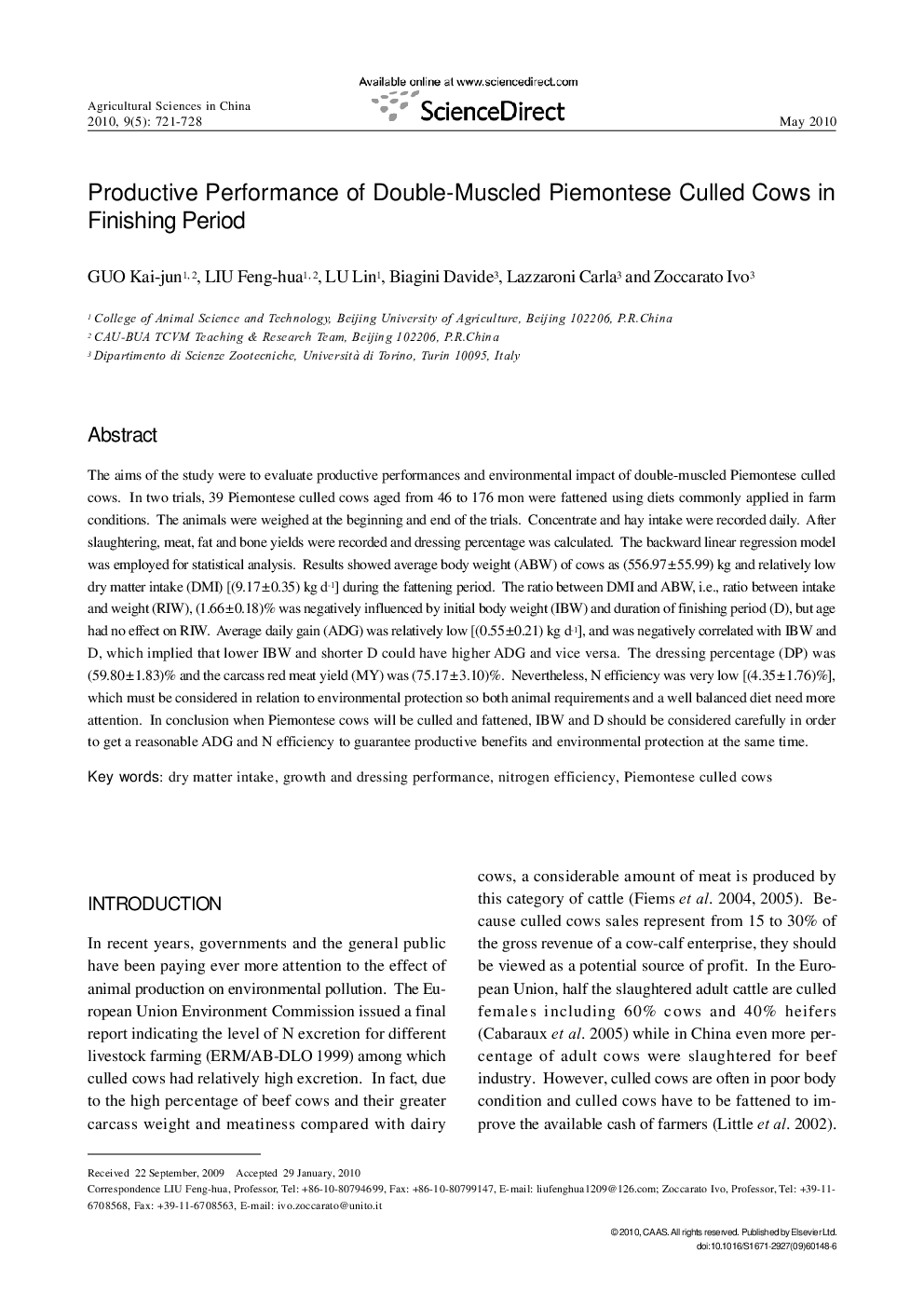| Article ID | Journal | Published Year | Pages | File Type |
|---|---|---|---|---|
| 4490241 | Agricultural Sciences in China | 2010 | 8 Pages |
The aims of the study were to evaluate productive performances and environmental impact of double-muscled Piemontese culled cows. In two trials, 39 Piemontese culled cows aged from 46 to 176 mon were fattened using diets commonly applied in farm conditions. The animals were weighed at the beginning and end of the trials. Concentrate and hay intake were recorded daily. After slaughtering, meat, fat and bone yields were recorded and dressing percentage was calculated. The backward linear regression model was employed for statistical analysis. Results showed average body weight (ABW) of cows as (556.97 ± 55.99) kg and relatively low dry matter intake (DMI) [(9.17 ± 0.35) kg d−1] during the fattening period. The ratio between DMI and ABW, i.e., ratio between intake and weight (RIW), (1.66 ± 0.18)% was negatively influenced by initial body weight (IBW) and duration of finishing period (D), but age had no effect on RIW. Average daily gain (ADG) was relatively low [(0.55 ± 0.21) kg d−1], and was negatively correlated with IBW and D, which implied that lower IBW and shorter D could have higher ADG and vice versa. The dressing percentage (DP) was (59.80 ± 1.83)% and the carcass red meat yield (MY) was (75.17 ± 3.10)%. Nevertheless, N efficiency was very low [(4.35 ± 1.76)%], which must be considered in relation to environmental protection so both animal requirements and a well balanced diet need more attention. In conclusion when Piemontese cows will be culled and fattened, IBW and D should be considered carefully in order to get a reasonable ADG and N efficiency to guarantee productive benefits and environmental protection at the same time.
